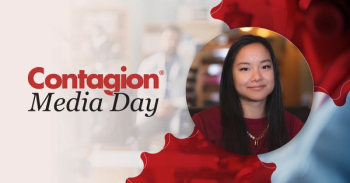The World Health Organization (WHO) has released their Global Tuberculosis Report for 2016, emphasizing that today’s global actions and investments are falling far short of what is needed to stop the worldwide tuberculosis (TB) epidemic.
Health officials around the world have made tackling TB a high priority. Last year the United Nations (UN) adopted the Sustainable Development Goals for 2030 to transform our world, and in that list of 17 goals, an end to epidemic diseases such as TB, AIDS, and malaria was included. Along with that, WHO’s End TB Strategy aims to cut TB deaths by 95% and reduce new cases by 90% between 2015 and 2035, while limiting the extremely high costs of TB treatment. Officials have put these public health targets in place because TB is one of the top 10 worldwide killers today. Global estimates show that 10.4 million people experienced a TB infection in 2015, with TB causing 1.8 million deaths. An estimated 1 million of those infections occurred in children, 170,000 of whom died of TB.
TB disease is caused by Mycobacterium tuberculosis, and infections most commonly occur in the lungs. Common symptoms included prolonged cough, along with chest pains, fatigue, weight lost, and fever. The new Global Tuberculosis Report explains that new surveillance data is showing that the TB problem is bigger than officials had previously estimated. While TB infection rates are relatively low in the United States and other developed countries, 60% of the new cases in 2015 occurred in India, Indonesia, China, Nigeria, Pakistan, and South Africa. A total of 30 countries account for 87% of new TB cases, and the report includes detailed country profiles for these high-burden countries. Globally, TB infection rates only dropped by 1.5% from 2014 to 2015, defying the goal of an annual 4-5% rate of reduction needed to hit key targets of WHO’s End TB Strategy.
The problem of antibiotic-resistant TB also continues to persist with alarming numbers, according to the new report. Rifampicin, isoniazid, ethambutol, and pyrazinamide are the first-line antibiotic drugs that are most commonly given to people suffering from active TB disease. An estimated 480,000 multi-drug resistant cases of TB occurred in 2015, along with 100,000 cases of rifampicin-resistant TB. Of all drug-resistant TB cases, 45% occurred in China, India, and the Russian Federation.
The issue of TB—HIV coinfection received attention in the WHO report as well. In 2015, 1.2 million cases of TB and 400,000 resulting deaths occurred in individuals infected with HIV. Tuberculosis can be most deadly in individuals with medical conditions that weaken the immune system, including those living with HIV, who are 20 to 30 times more likely to develop active TB infections. The new report notes that in 2015, 55% of reported TB patients were positive for HIV, and that TB is the biggest killer among HIV-positive people.
If there are signs of progress, the new WHO report makes note of these brighter points without letting them downplay the threat of the TB epidemic. Deaths from TB have dropped by 22% since 2000, and treatment of the disease since then has prevented 49 million deaths around the world, according to the report. Overall reporting of TB cases to WHO officials has also increased since 2013, with 34% more cases being reported in India alone. However, more than 4 million cases worldwide go unreported to WHO. Researchers around the world are working on the development of new treatments, diagnostic tools, and preventive vaccines for TB, but these efforts will be underfunded by nearly $2 billion in 2016, rising to $6 billion by 2020, without additional help from international donors.
By 2020, world health officials hope to reduce TB deaths by 35% and the incidence of TB infections by 20%. "We face an uphill battle to reach the global targets for tuberculosis," said Dr Margaret Chan, WHO Director General, in an agency press release. "There must be a massive scale-up of efforts, or countries will continue to run behind this deadly epidemic and these ambitious goals will be missed."























































































































































































































































































































